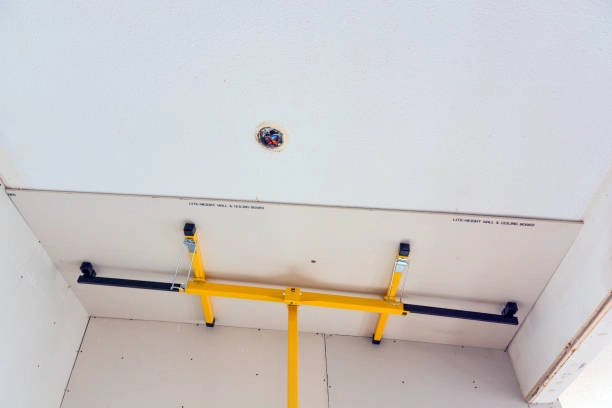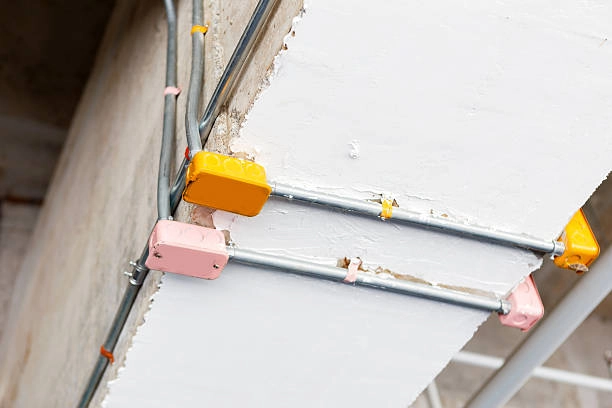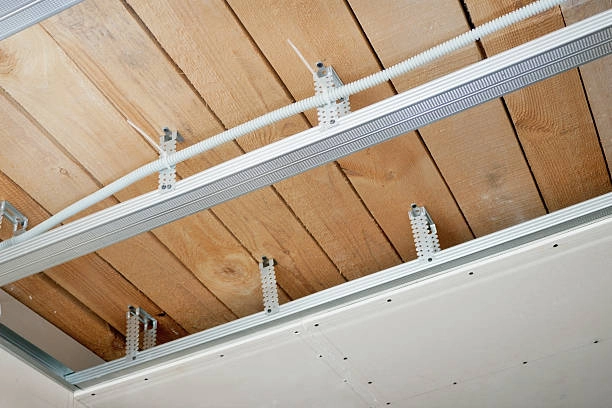Transforming your living or working space with fresh drywall can be a thrilling endeavor, marked by the promise of a renewed aesthetic and functionality. Yet, this undertaking often comes with challenges that require thorough planning and execution. Among the arsenal of tools essential for a smooth drywall installation, one stands out for its indispensable role: the drywall lift.
This piece of equipment not only facilitates the installation process but also ensures precision and efficiency, offering a helping hand where manual labor would otherwise be strenuous and time-consuming. In this comprehensive guide, we delve into the intricacies of what a lift entails, why it’s a game-changer for your project, and how it can upgrade your drywall installation experience to new heights of ease and professionalism.

Understanding Drywall Installation
Drywall, also known as plasterboard or gypsum board, is a staple material in modern construction due to its efficiency and versatility. It consists of gypsum plaster sandwiched between thick paper sheets, making it easy to install and repair. The installation process involves attaching the drywall sheets to the wall or ceiling framing using screws or adhesive, followed by mudding and taping to conceal joints and screws, preparing it for painting or finishing.
Introducing the Drywall Lift
It is often referred to as a drywall hoist or panel lift, and is a mechanical device designed to hold and upgrade drywall sheets into place during installation. It typically consists of a sturdy frame with a cradle to hold the drywall panel and an extendable arm to lift it to the desired height. This tool eliminates the need for manual lifting and holding of heavy drywall sheets, making it a game-changer for both professionals and DIY enthusiasts.
Benefits of Using a Drywall Lift
- Ease of Installation: The primary advantage of a lift is its ability to lift and position drywall sheets accurately and safely. This eliminates the strain and physical effort required when manually holding and maneuvering large panels into place.
- Increased Efficiency: By using a drywall lift, you can significantly speed up the installation process. The lift allows one person to handle and position drywall sheets that would typically require multiple individuals, reducing labor costs and project timelines.
- Precise Placement: Achieving a precise fit is crucial for smooth drywall installation. A lift ensures that panels are aligned correctly and held securely in place while fastening, minimizing the risk of misalignment or gaps that can compromise the finish.
- Safety: Handling heavy drywall sheets manually can pose risks of strain or injury. A lift mitigates these risks by providing a stable platform to lift and maneuver panels safely, reducing the likelihood of accidents on the job site.
- Versatility: lifts are adjustable and can accommodate various panel sizes and thicknesses. This versatility makes them suitable for a range of drywall installation projects, from residential renovations to large-scale commercial construction.

Using a Drywall Lift Effectively
- Preparation: Before using the lift, ensure the floor surface is clear and level to maneuver the lift smoothly. Assemble the lift according to manufacturer instructions, checking all components for stability.
- Loading the Panels: Position the drywall panel onto the lift’s cradle, ensuring it is centered and balanced. Adjust the lift’s height to match the installation area, allowing for slight adjustments as needed.
- Lifting and Placement: Engage the lift’s mechanism to enhance the drywall panel to the desired height. Maneuver the lift into position against the wall or ceiling framing, aligning the panel carefully before securing it with screws or adhesive.
- Repeat and Adjust: For multiple panels, repeat the process, adjusting the lift as necessary for each installation area. Ensure each panel is aligned flush with adjacent panels and framed edges for a flawless finish.

In conclusion, mastering drywall installation requires not only skill but also the right tools for the job. A drywall lift stands out as a valuable investment that enhances efficiency, safety, and precision during the installation process. Whether you’re a professional contractor or a dedicated DIYer, incorporating a lift into your toolkit can significantly streamline projects. Moreover, it reduces physical strain and ensures professional-quality results, making it an essential tool for efficient and effective construction or renovation tasks.
At Hollywood Refinishing, we understand the importance of quality tools and techniques in achieving impeccable remodeling results. With over twenty years of experience in residential and commercial remodeling services, we pride ourselves on delivering excellence through clear communication, meticulous craftsmanship, and a commitment to client satisfaction. Contact us today to learn more about how our expertise and services can transform your space with precision and care.
Master your drywall installation projects with Hollywood Refinishing and discover the difference that a drywall lift can make in your remodeling endeavors. Let us help you create spaces that reflect your unique style and meet your functional needs, all while adhering to your budget and timeline. Reach out to us today and start on your journey to a beautifully renovated home or workspace.
Frequently Asked Questions
1. What is a drywall lift, and how does it work?
It is also known as a panel lift or drywall hoist and is a mechanical device designed to hold and upgrade drywall sheets into place during installation. It typically features a sturdy frame with a cradle to hold the panel and an extendable arm to lift it to the desired height.
2. What are the primary benefits of using a lift?
Using it enhances efficiency by reducing the physical effort required to position heavy drywall sheets accurately. It also improves safety on the job site by allowing for precise panel placement, thereby speeding up installation timelines.
3. Who can benefit from using a lift?
It is beneficial for both professional contractors and DIY enthusiasts alike. Furthermore, they streamline the installation process, making it easier to handle and position drywall sheets, regardless of project size or complexity.
4. Are lifts adjustable to accommodate different panel sizes?
Yes, It is mostly adjustable to accommodate various panel sizes and thicknesses. This versatility makes them suitable for a wide range of drywall installation projects, from residential renovations to commercial construction.
5. Do lifts require assembly?
Yes, it typically requires assembly before use. Moreover, it’s important to follow the manufacturer’s instructions carefully to ensure proper assembly and stability of the lift during operation.
6. How can using a lift contribute to a safer work environment?
Using a lift reduces the physical strain and potential injury risks associated with manually lifting and positioning heavy drywall sheets overhead. It provides a stable platform for maneuvering panels into place safely.
7. Can a drywall lift help expedite project timelines?
Yes, using a lift can significantly expedite project timelines by allowing one person to handle and position drywall sheets that would typically require multiple individuals. Consequently, this reduces labor costs and accelerates the overall installation process, thereby optimizing efficiency and productivity on-site.




